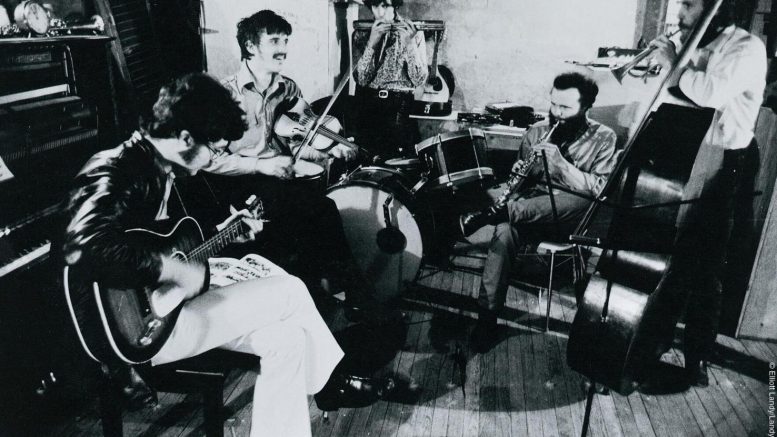Colin Linden, Rob Fraboni and John Simon, all of whom worked with the Band, offer remembrances.
By Nick Krewen
Special to the Star
In 1968, when Colin Linden was eight years old, he heard a song on the radio that boggled his young mind.
He was at Alexander’s department store in White Plains, N.Y., when rock radio station WNEW-FM played “The Weight” by a Canadian-American band simply called The Band.
“It was unlike any other music I’d ever heard,” the Toronto-born Linden, whose family had relocated to the States, told the Star.
“It changed everything.”
By the time Music From Big Pink, the album featuring the single, was released that October, Linden had saved enough money to buy it.
Linden, whose family returned to Toronto in the ‘70s, would establish his own music career as a teen — first as a guitar prodigy, and later as a noted session player, Grammy-winning producer and member of the acclaimed roots trio Blackie and the Rodeo Kings. He said the Band’s debut album — created by singer and drummer Levon Helm, singer and keyboardist Richard Manuel, singer and bass player Rick Danko, guitarist Robbie Robertson and keyboardist and multi-instrumentalist Garth Hudson, who died on Jan. 21 at age 87 — was a turning point in his musical education, opening up a whole new world of sonic possibilities.
“The same thing that hit me as an eight-year-old kid continues to hit me to this day,” Linden said. “This beautiful sense of a universe unto itself that is very much atmospheric but is made up of all the things you know and love — or you think you know and love — about blues, folk music, country music, rock ’n’ roll, all the different church music. And that beauty continues.
“That record … there’s nothing about it that’s dated at all.”
Linden, who later toured with the Band when they reunited without Robertson in the ‘80s and early ‘90s, wasn’t the only prominent musician who felt the earth-shattering resonance of Music From Big Pink. It prompted superstar guitarist Eric Clapton to switch musical gears completely.
Clapton had been given a copy of the album by its producer, John Simon, and once he heard it, decided to dissolve his successful hard-rock trio Cream, which included bass player Jack Bruce and drummer Ginger Baker.
“Eric was having misgivings about what he was doing,” Grammy-winning producer/engineer Rob Fraboni told the Star.
“When he heard Big Pink, Eric said to me, ‘What the f—k am I doing? This is the real thing,’” said Fabroni, whose credits include Bob Dylan and the Band’s 1974 albums Planet Waves and Before the Flood, The Basement Tapes, the Band’s Northern Lights — Southern Cross and The Last Waltz, as well as Clapton’s No Reason to Cry, featuring members of the Band.
“And then he went to Jack and Ginger and said, ‘I can’t do this anymore.’”
Simon — who produced the album containing not only the “The Weight” and “Chest Fever,” with its titanic and menacing Hudson organ intro, but also other Band classics, like “Tears of Rage,” “This Wheel’s on Fire” and “I Shall Be Released” (written by Dylan) — told the Star that Music From Big Pink wasn’t exactly a hit out of the gate.
“The thing about Big Pink was that it was not accepted by the general public until musicians that they respected hailed it,” said Simon, who also produced the Band’s self-titled 1969 followup — which included the hits “The Night They Drove Old Dixie Down” and “Up on Cripple Creek” — and served as music director for The Last Waltz.
“It didn’t just fly up the charts. I was in L.A. at the time, and I had a carton of Big Pink vinyl. I would hand out copies to every musician I met — Steve Stills and Keith Moon, the drummer from The Who, and Clapton — people I’d bump into.
“They would say, ‘Man, this album is great!’ And that just filtered down to their fans to the point that when the second album came out, that was really anticipated, and that album flew right off the shelves.”
Until this point, the Band’s stock had risen steadily since 1961, when, as Levon and the Hawks, they backed the irrepressible rockabilly showman Ronnie Hawkins. Through incessant practice and touring, Hawkins had “molded us into the wildest, fiercest, speed-driven bar band in America,” Helm wrote in his 1993 autobiography, This Wheel’s on Fire.
The Hawks received a further boost in 1965 when Bob Dylan, powering up for a tour after going electric with the albums Bringing It All Back Home and Highway 61 Revisited, recruited them after seeing them perform at Toronto’s Friar’s Tavern.
They were there for him during hostile receptions from European audiences (well, everyone except Helm, who didn’t make the tour). As Dylan recovered from a horrific motorcycle accident the following year, he gathered with them in Woodstock, N.Y., to write, cover and perform more than 150 songs that became the legendary Basement Tapes.
But Music From Big Pink was their true emergence as the Band and as musicians’ musicians, revealing a core of enviable talent that revolved around a roots-driven sound. It was a sound that only lasted for seven studio albums (and the Robertson-mandated Last Waltz dissolution) with the original lineup, a sound that was grounded with a realism both unique and inimitable.
The Band’s final chapter may have been written with the passing of Hudson, but the four Canadians (Robertson, Manuel, Danko and Hudson) and one American (Helm) left an indelible mark on popular music.
“I always found that with all the guys, they all sounded like the Band,” Linden said. “When you’d hear Rick Danko play by himself, he sounded like the Band. When you’d hear Levon, he sounded like the Band. Garth really typified that in the deep, deep well of music that went into all of the music they played.”

